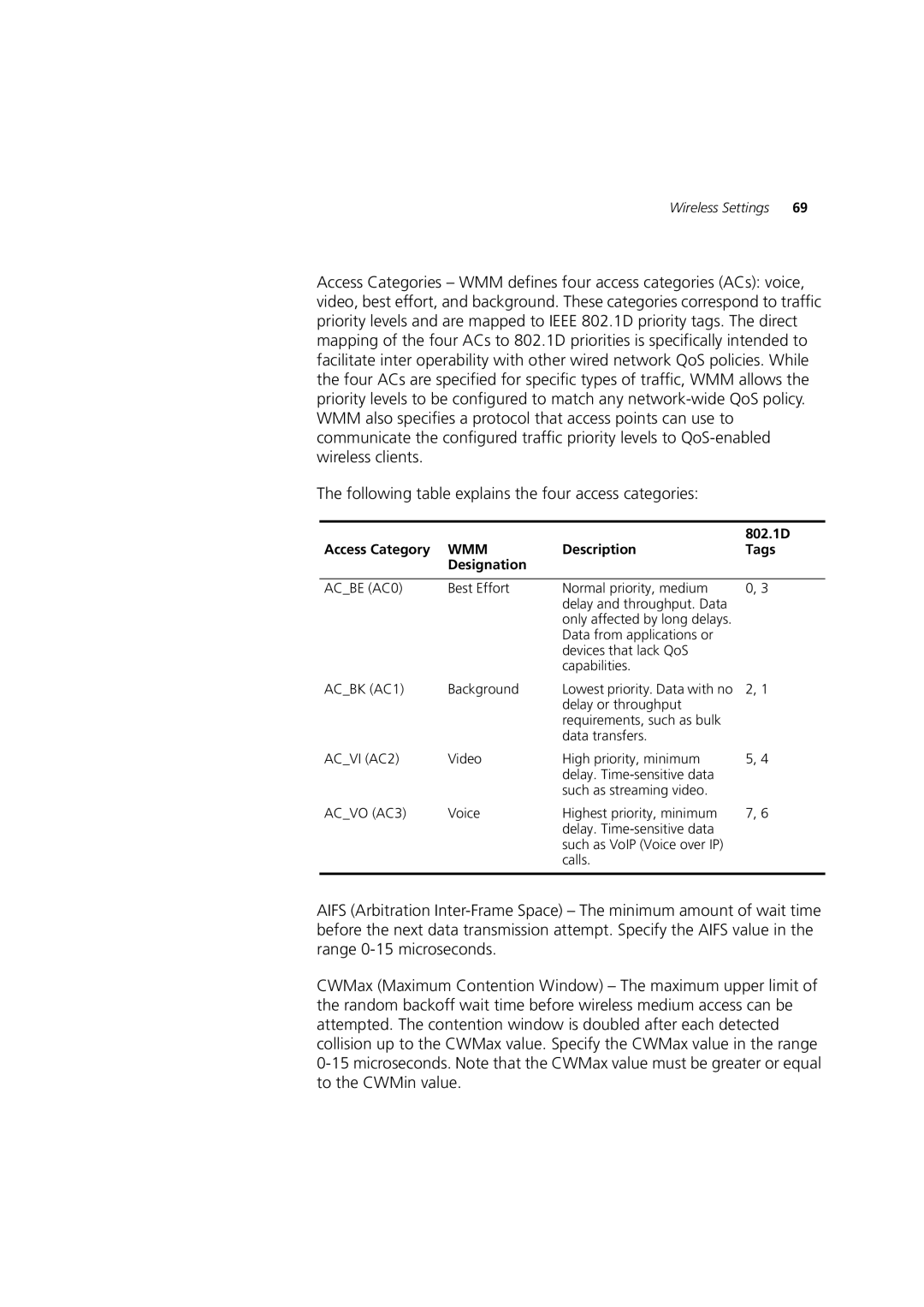
Wireless Settings 69
Access Categories – WMM defines four access categories (ACs): voice, video, best effort, and background. These categories correspond to traffic priority levels and are mapped to IEEE 802.1D priority tags. The direct mapping of the four ACs to 802.1D priorities is specifically intended to facilitate inter operability with other wired network QoS policies. While the four ACs are specified for specific types of traffic, WMM allows the priority levels to be configured to match any
The following table explains the four access categories:
|
|
| 802.1D |
Access Category | WMM | Description | Tags |
| Designation |
|
|
|
|
|
|
AC_BE (AC0) | Best Effort | Normal priority, medium | 0, 3 |
|
| delay and throughput. Data |
|
|
| only affected by long delays. |
|
|
| Data from applications or |
|
|
| devices that lack QoS |
|
|
| capabilities. |
|
AC_BK (AC1) | Background | Lowest priority. Data with no | 2, 1 |
|
| delay or throughput |
|
|
| requirements, such as bulk |
|
|
| data transfers. |
|
AC_VI (AC2) | Video | High priority, minimum | 5, 4 |
|
| delay. |
|
|
| such as streaming video. |
|
AC_VO (AC3) | Voice | Highest priority, minimum | 7, 6 |
|
| delay. |
|
such as VoIP (Voice over IP) calls.
AIFS (Arbitration
CWMax (Maximum Contention Window) – The maximum upper limit of the random backoff wait time before wireless medium access can be attempted. The contention window is doubled after each detected collision up to the CWMax value. Specify the CWMax value in the range
